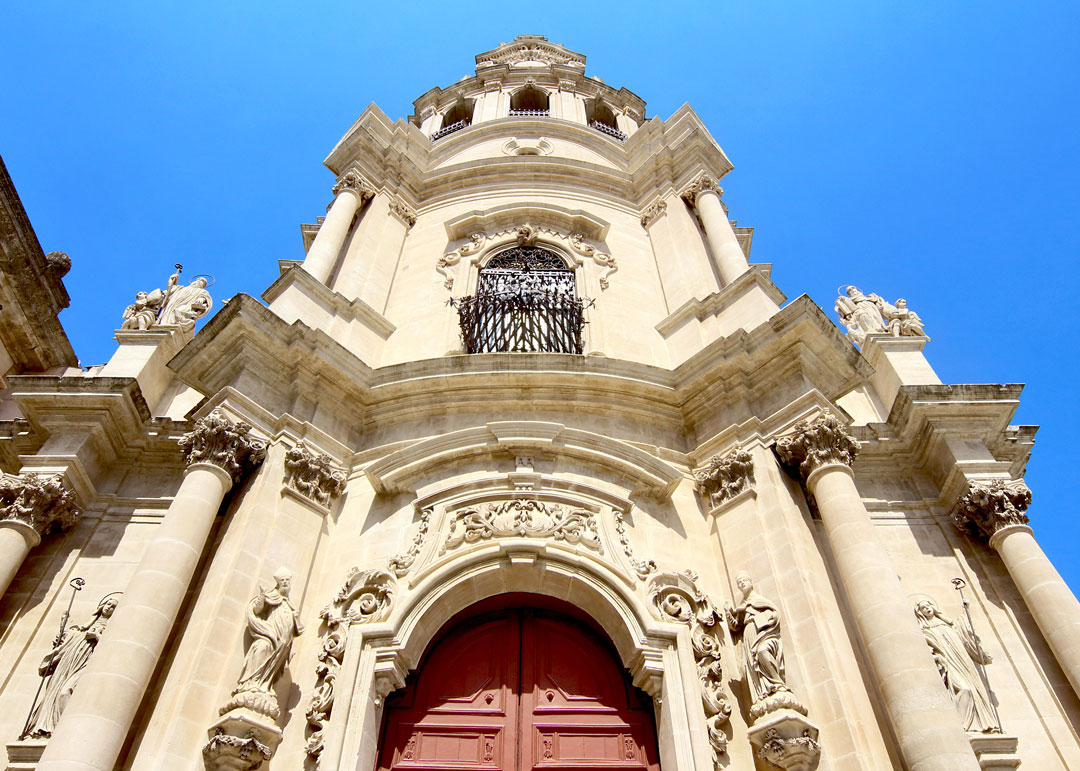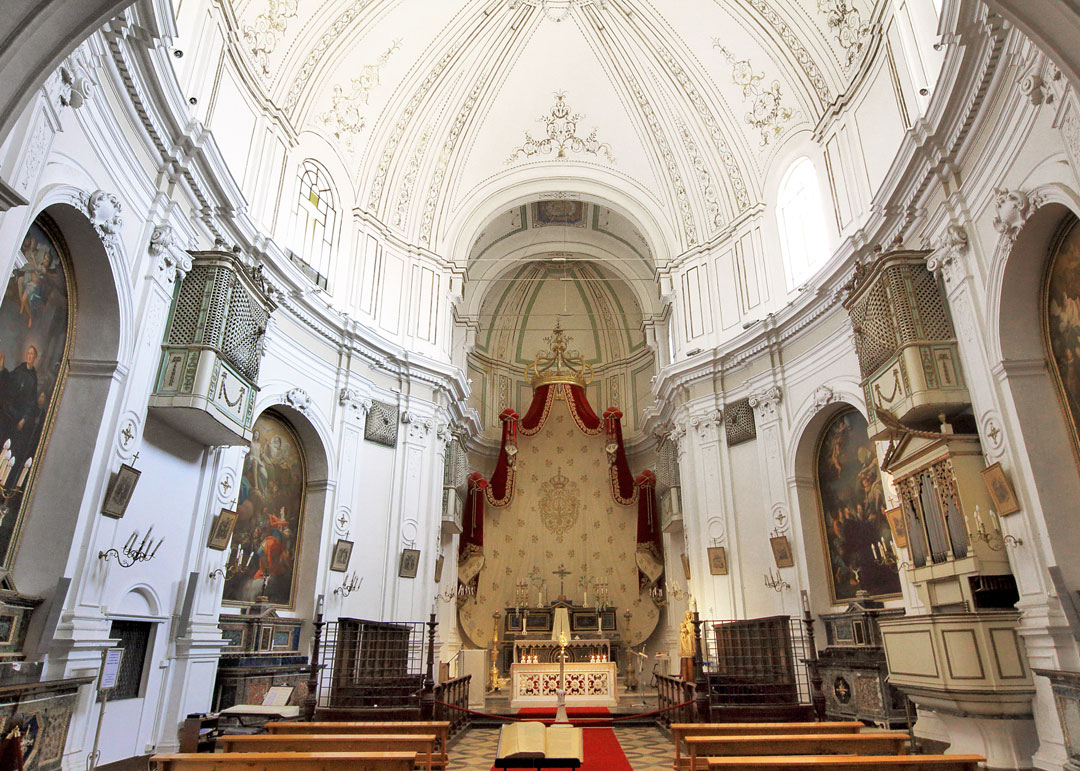Portami Qui

 La chiesa di San Giuseppe fu iniziata nel 1756 e completata nel 1796. Sul bel prospetto barocco spiccano le statue dei Santi e Sante dell’ ordine benedettino .L’ interno , a pianta ovale, ha un bel pavimento in pietra bianca con intarsi in pietra pece e mattoni colorati ; al centro della volta un affresco di Sebastiano Monaco raffigura “La gloria di san Benedetto”. Degni di nota: il quadro della “Sacra Famiglia”(1779)., in fondo all’ abside ,e la statua lignea di San Giuseppe rivestita in argento(1785).
La chiesa di San Giuseppe fu iniziata nel 1756 e completata nel 1796. Sul bel prospetto barocco spiccano le statue dei Santi e Sante dell’ ordine benedettino .L’ interno , a pianta ovale, ha un bel pavimento in pietra bianca con intarsi in pietra pece e mattoni colorati ; al centro della volta un affresco di Sebastiano Monaco raffigura “La gloria di san Benedetto”. Degni di nota: il quadro della “Sacra Famiglia”(1779)., in fondo all’ abside ,e la statua lignea di San Giuseppe rivestita in argento(1785).
 The church of San Giuseppe was begun in 1756 and completed in 1796. The statues of saints belonging to the benedectine order are emphasized by the wonderful baroque prospective. The oval-shaped interior is tiled in white stones inlaid with pitch stones and coloured tiles. In the middle of the vault a fresco by Sebastiano Monaco represents “St Benedict’s glory”. Other remarkable characteristics are: the pictures of “The Sacred Family” (1779) at the end of the apse and St Joseph’s wooden statue covered in silver (1785).
The church of San Giuseppe was begun in 1756 and completed in 1796. The statues of saints belonging to the benedectine order are emphasized by the wonderful baroque prospective. The oval-shaped interior is tiled in white stones inlaid with pitch stones and coloured tiles. In the middle of the vault a fresco by Sebastiano Monaco represents “St Benedict’s glory”. Other remarkable characteristics are: the pictures of “The Sacred Family” (1779) at the end of the apse and St Joseph’s wooden statue covered in silver (1785).
 L’église de San Giuseppe fut commencée en 1756.On peut remarquer les statues des Saints scuptés sur la belle façade baroque. L’intérieur est à plante ovale.Il y a un dallage de pierre blanche avec des entailles en pierre de poix et en briques colorées; au centre de la ,il y a un fresque par Sebastiano Monaco qui répresente “La gloire de Saint Benedicte”.On peut admirer: le tableau de la “Sacrée Famille” (1779) au fond de l’abside et la statue de Saint Joseph en bois recouvert d’argent (1785).
L’église de San Giuseppe fut commencée en 1756.On peut remarquer les statues des Saints scuptés sur la belle façade baroque. L’intérieur est à plante ovale.Il y a un dallage de pierre blanche avec des entailles en pierre de poix et en briques colorées; au centre de la ,il y a un fresque par Sebastiano Monaco qui répresente “La gloire de Saint Benedicte”.On peut admirer: le tableau de la “Sacrée Famille” (1779) au fond de l’abside et la statue de Saint Joseph en bois recouvert d’argent (1785).
 Die Kirche von San Giuseppe (Josef) wurde 1756 begonnen und 1796 beendet. Auf der schönen barocken Vorderansicht heben sich deutlich die Statuen der Heiligen des Benediktinerordens hervor. Der Innenraum, mit ovalem Grundriß, besitzt einen schönen Fußboden aus weißem Stein mit Intarsien aus Pechstein und gefärbtem Backstein. In der Mitte des Gewölbes verkörperet ein Fresko von Sebastiano Monaco “Den Ruhm des Hl. Benedikt”. Erwähnenswert sind auch das Bild der heiligen Familie (1779), hinten in der Apsis, und die versilberte Holzstatue von S. Giuseppe (1785).
Die Kirche von San Giuseppe (Josef) wurde 1756 begonnen und 1796 beendet. Auf der schönen barocken Vorderansicht heben sich deutlich die Statuen der Heiligen des Benediktinerordens hervor. Der Innenraum, mit ovalem Grundriß, besitzt einen schönen Fußboden aus weißem Stein mit Intarsien aus Pechstein und gefärbtem Backstein. In der Mitte des Gewölbes verkörperet ein Fresko von Sebastiano Monaco “Den Ruhm des Hl. Benedikt”. Erwähnenswert sind auch das Bild der heiligen Familie (1779), hinten in der Apsis, und die versilberte Holzstatue von S. Giuseppe (1785).



